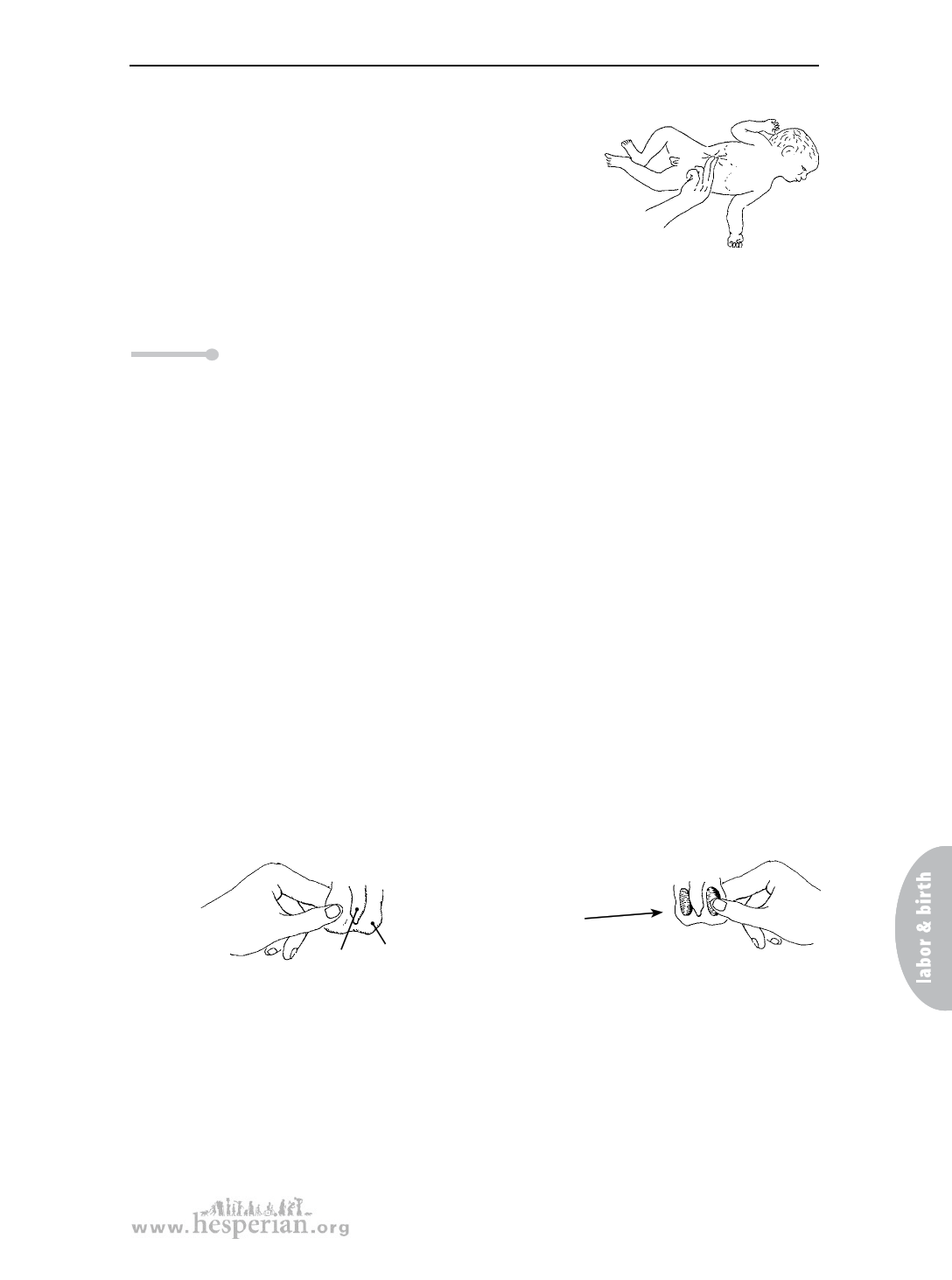
What to do for the baby
Belly
Look at the belly. Does it look normal? What happens
to the area around the cord when the baby cries? If
some of the baby’s insides push the skin out, this
means the belly muscles are not connected. This is
called an umbilical hernia. Get medical advice.
Next, feel the belly. When the baby is not crying, the belly should be soft.
Check for lumps, cysts (round sacs of fluid), or other odd shapes under the skin.
If you find anything unusual, get medical advice.
Note: The freshly cut cord can easily become infected. To prevent
infection, keep it clean and dry. Always wash your hands before
touching the cord and do not cover it or put anything on it. Check to
see if the cord has stopped bleeding. If it is still bleeding, clamp or tie
it again.
Genitals and anus
Look at the baby’s genitals. All babies’ genitals look swollen after birth. If the baby
was breech, the genitals may be very swollen.
Make sure that the anus is really an opening, and not covered over with skin. If
the baby has had a bowel movement, you know that this part of the body works.
If the baby has no anus, or if it is closed, get medical help right away.
For a boy
First look at the baby’s scrotum. The scrotum is the sac under the penis. Inside the
sac, there are 2 smooth, firm balls called testicles which will make sperm when the
boy is older. During pregnancy, the testicles form inside the boy’s body and they
usually drop down (descend) into the scrotum before birth. You should be able to
feel the testicles and move them down with your fingers.
Feel the
testicles.
penis scrotum
If you could see
through the scrotum,
the testicles would
look like this.
If you cannot find one or both testicles, ask the baby’s parents to check again in a
month or so. If the testicles still have not come down, get medical advice.
Next, check to see if the hole at the end of the penis seems in the right place.
If the penis does not look normal, get medical advice.
263
A Book for Midwives (2010)